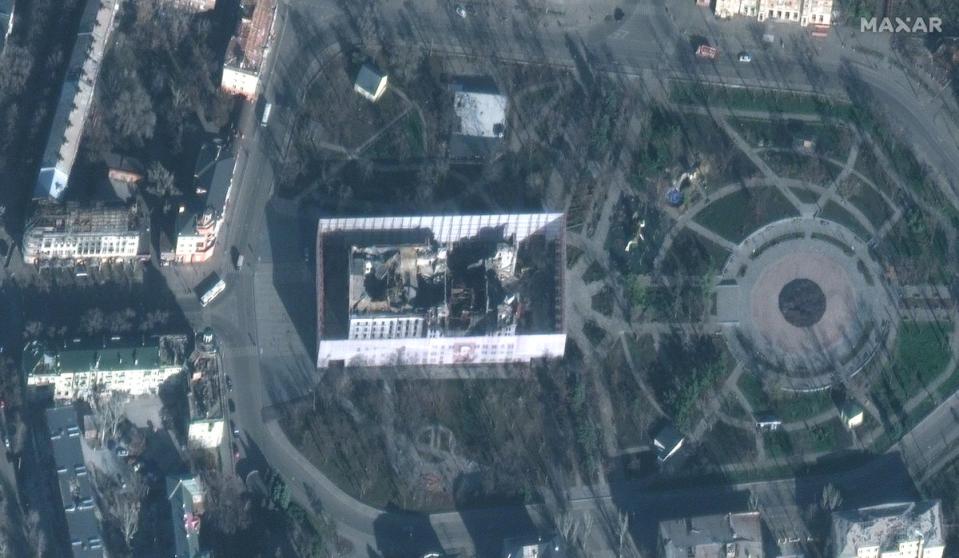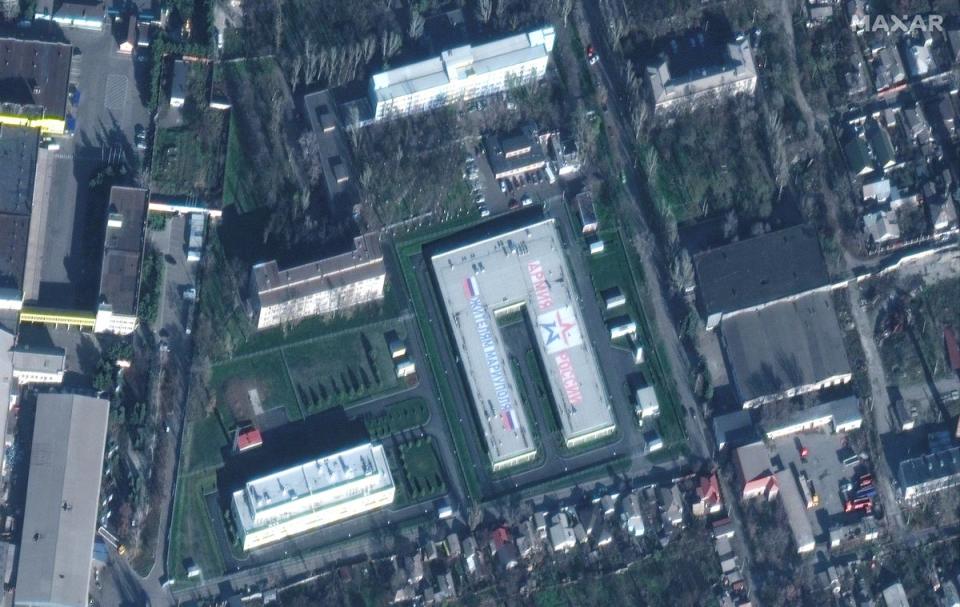Satellite images show expansion of Mariupol graveyard and destruction of city by Russia

Satellite imagery of Mariupol appear to show the extension of a burial site in the southern Ukrainian city which was brutally beseiged and captured by Russia in the first months of Vladimir Putin’s war.
The Azov Sea port has been fully under Moscow’s control since May, and photographs captured by Maxar Technologies provide some evidence of what Russia’s forces have done there since their occupation began.
Up to 95 per cent of the city’s buildings were destroyed in the onslaught, according to Ukrainian premier Denis Shmyhal, and the images taken this week appear to show that Russia is now demolishing dozens of high-rise apartment buildings damaged in its bombardment in March.
A large protective screen also seems to have been erected at the Mariupol theatre, where hundreds of people are feared to have died in a missile attack as civilians used the facility as an air raid shelter on 18 March – in what Amnesty International has alleged is a “clear war crime” by Russia.
In the centre-north of the city, satellite images taken on Wednesday are purported to show a newly-built Russian military compound – with the Russian army slogan daubed on the building’s roof.
At the city’s main cemetery, Staryi Krym, in the northwest, Maxar said its new aerial images suggest a “significant expansion of the number of graves” compared with a photo of the same location from 29 March, with previously bare earth appearing freshly dug.
The true scale of death in the city of 500,000 inhabitants remains unknown while it is still held by Russia, but Ukraine estimates that at least 25,000 civilians were killed – up to 7,000 of them dying under rubble after their homes were bombed, according to the BBC.


Witnesses in Mariupol have told the broadcaster that Russian authorities have been removing bodies from the ruins of buildings in recent months and taking them away for burial.
Analysis of satellite images published by Maxar last month, carried out by the Centre for Information Resilience for BBC Panorama, concluded that 1,500 new graves had been dug at Staryi Krym since June, with a total of 4,600 since the war started in February. Staryi Krim is one of three burial sites near Mariupol.
Hundreds of thousands of those who previously lived in Mariupol are thought to be among the 15 to 30 million people displaced by Mr Putin’s war, while regional authorities in Donetsk have accused Moscow of forcibly deporting at least 50,000 of the city’s residents to Russian-held territory.
Some analysts suggest Russia’s vicious bombardment of Mariupol was partly motivated by the heavy presence of fighters from the Azov Regiment, a Ukrainian group with strong neo-Nazi links – playing into Mr Putin’s overblown attempts to justify his war as one aimed at rooting out far-right elements in Ukraine.

However, the weeks-long assault on Azov fighters and civilians holed up in a final pocket of resistance underneath the Azovstal steel plant saw the controversial regiment – which insists it is a reformed organisation despite its origins in neo-Nazism – widely hailed as “heroes” in Ukraine.

After capturing the last fighters in Azovstal, the group was branded a terror organisation by Russia’s Supreme Court, paving the way for harsher treatment by Moscow. Since then, however, many of the fighters have been traded in prisoner swaps, as Mr Putin fails to achieve his military aims.
Last month, the British Ministry of Defence claimed that Russia had started to construct defensive structures around Mariupol, with two plants producing anti-tank structures known as “dragon’s teeth” for this purpose.
These have likely been installed between Mariupol and the villages of Staryi Krym and Nikolske, and had also been sent for the preparation of defensive fortifications in occupied Zaporizhzhia and Kherson, the ministry said.
“This activity suggests Russia is making a significant effort to prepare defences in depth behind their current front line, likely to forestall any rapid Ukrainian advances in the event of breakthroughs,” it added.


